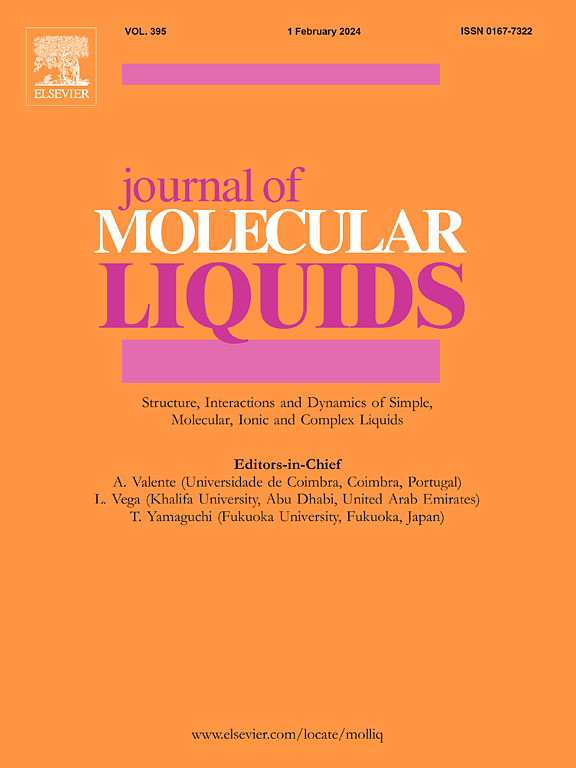钢铁副产品作为一种新型钻井液加重剂的可持续利用
IF 5.3
2区 化学
Q2 CHEMISTRY, PHYSICAL
引用次数: 0
摘要
钻井液需要加重材料来增加密度,确保井筒稳定性和压力控制。这项研究提出,钢铁制造的副产品——重钢废料(HSW)可以作为重晶石和赤铁矿等传统加重剂的可持续替代品。通过粒度分析、XRD、XRF和SEM对HSW进行了表征,发现HSW铁含量高达98.11%,具有多孔、团聚的结构。通过测试其在水基钻井液中的流变性、稳定性、滤失性和滤饼质量来评价其性能。结果表明,HSW具有与重晶石和赤铁矿相当的流变特性,可以有效地保持流体稳定性和井筒完整性。此外,HSW的滤饼性能优越,可以更好地控制滤失。这些研究结果表明,HSW可以作为一种高效、环保的加重材料,提供一种经济有效的解决方案,同时促进工业废物的再利用,减少钻井作业中对传统材料的依赖。本文章由计算机程序翻译,如有差异,请以英文原文为准。
Repurposing steel byproducts for sustainable utilization as a novel weighting agent in drilling fluids
Drilling fluids require weighting materials to increase density, ensuring wellbore stability and pressure control. This study proposes heavy steel waste (HSW), a byproduct of steel manufacturing, as a sustainable alternative to traditional weighting agents like barite and hematite. HSW was characterized using particle size analysis, XRD, XRF, and SEM, revealing a high iron content (98.11%) and a porous, agglomerated structure. Its performance was evaluated in water-based drilling fluids by testing rheology, stability, filtration, and filter cake quality. Results showed that HSW exhibits comparable rheological behavior to barite and hematite, effectively maintaining fluid stability and wellbore integrity. Additionally, HSW produced superior filter cake properties, indicating better fluid loss control. These findings suggest that HSW can serve as an efficient and environmentally beneficial weighting material, offering a cost-effective solution while promoting industrial waste reuse and reducing reliance on conventional materials in drilling operations.
求助全文
通过发布文献求助,成功后即可免费获取论文全文。
去求助
来源期刊

Journal of Molecular Liquids
化学-物理:原子、分子和化学物理
CiteScore
10.30
自引率
16.70%
发文量
2597
审稿时长
78 days
期刊介绍:
The journal includes papers in the following areas:
– Simple organic liquids and mixtures
– Ionic liquids
– Surfactant solutions (including micelles and vesicles) and liquid interfaces
– Colloidal solutions and nanoparticles
– Thermotropic and lyotropic liquid crystals
– Ferrofluids
– Water, aqueous solutions and other hydrogen-bonded liquids
– Lubricants, polymer solutions and melts
– Molten metals and salts
– Phase transitions and critical phenomena in liquids and confined fluids
– Self assembly in complex liquids.– Biomolecules in solution
The emphasis is on the molecular (or microscopic) understanding of particular liquids or liquid systems, especially concerning structure, dynamics and intermolecular forces. The experimental techniques used may include:
– Conventional spectroscopy (mid-IR and far-IR, Raman, NMR, etc.)
– Non-linear optics and time resolved spectroscopy (psec, fsec, asec, ISRS, etc.)
– Light scattering (Rayleigh, Brillouin, PCS, etc.)
– Dielectric relaxation
– X-ray and neutron scattering and diffraction.
Experimental studies, computer simulations (MD or MC) and analytical theory will be considered for publication; papers just reporting experimental results that do not contribute to the understanding of the fundamentals of molecular and ionic liquids will not be accepted. Only papers of a non-routine nature and advancing the field will be considered for publication.
 求助内容:
求助内容: 应助结果提醒方式:
应助结果提醒方式:


